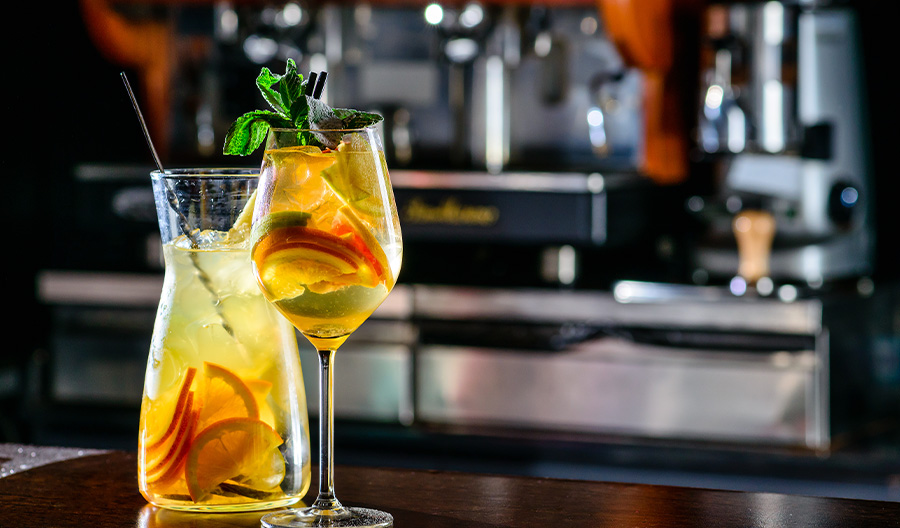For many, the word “sangria” likely conjures images of red wine swimming with jewel-like cut fruit, and certainly, the internet is filled with such recipes. There are also seemingly infinite riffs on this traditional style of sangria, from tequila-spiked sangria with hibiscus to the sangria slushie.
But there’s no reason to settle always and forever for sangria made with red wine. Sangria aficionados should not be afraid to take a walk on the white side, says Augi Anagnostos, Wine Enthusiast’s assistant tasting coordinator. White wines can lend to lighter, brighter sangrias, like Clericó, Uruguay’s spritzy summertime staple, or melón con vino, Chile’s sangria-adjacent honeydew cocktail. Our French press sangria is a particularly excellent, fruit-forward example.
But how does one settle on the right wine to use in white wine sangria? Here are a few tips from the Wine Enthusiast Tasting Department, plus some of our top white wine picks for sangria.

How to Choose the Best White Wine for Sangria
When making white sangria, start with a high-acid wine to achieve the drink’s signature “crisp, refreshing feeling,” says Anagnostos. You’ll know your wine is high in acid if sips yield a tart, mouth-puckering feeling.
Because sangria is often associated with Spain, it’s natural to gravitate towards Spanish wines like Albariño, Cava or Verdejo. These are great options for sangria, but any high-acid wine from around the globe will do, like Pinot Grigio or Sauvignon Blanc. You may even want to choose wines with flavors that mimic the fruits you plan to include—like lemon, green apple or peach. Of course, drinkers should ultimately pick one that suits their tastes.
Next, choose a wine that you’d want to drink straight, but isn’t too expensive. “You taste the wine, but you don’t really taste the wine properly, because it’s mixed with everything else,” Anagnostos explains.
She suggests choosing a bottle under $30, something one might pour on a casual Wednesday night. This can even include a good boxed wine, which is a great option to keep the price low—a key consideration if you’re batching sangria for a crowd.
Our Picks
Albariño
Albariño wine (“alba-reen-yo”) is a delightfully refreshing coastal white that grows on the Iberian Peninsula. It’s loved for its rich stone fruit flavors, a hint of salinity, and zippy acidity.
Verdejo
An herbaceous white wine that grows almost exclusively in the Rueda region of Spain. Not to be confused with Verdelho, a Portuguese grape used in primarily in Madeira.
Sauvignon Blanc
A popular and unmistakable white wine that’s loved for its “green” herbal flavors and racy acidity. Sauvignon Blanc grows nearly everywhere and thus, offers a variety of styles ranging from lean to bountiful.
Brut Sparkling Wine
Brut, which means "dry, raw, or unrefined," in French, is the driest (meaning the least sweet) classification of Champagne. To be considered Brut, the Champagne must be made with less than 12 grams of added sugar per liter. Brut Champagne is the most common style of sparkling wine.
Pinot Grigio
Pinot Grigio is a pinkish grape mutation of Pinot Noir. It’s famously known for zesty white wines, but can also create fuller-bodied white wines and even be used for rosé. Look to Northern Italy, Alsace, Oregon, and Germany for benchmark examples.
Cava
Cava is a Spanish sparkling wine and is made the same way that Champagne is produced, but using different grapes.

